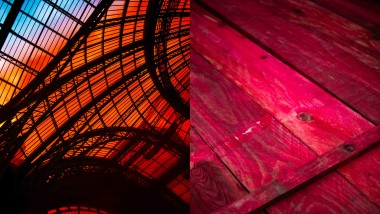
The art of putting on shoes in Ancient Egypt
Shoes – a very precious documentary source
Among the objects found in the tombs of Ancient Egypt, alongside sumptuous fabrics and precious jewels, were found items of clothing which for a long time nothing had been known about: shoes. Death brought them to the tomb, in the same way as furniture, to be enjoyed in the afterlife.
Often produced with highly developed craftsmanship, these shoes provide additional indications concerning a specific expertise and the art of working several materials: plant fibres, wood and leather. They also provide clues as to the social standing of the deceased. For in Ancient Egypt, wearing shoes indicated a certain social position. Many people went bare foot. The king’s sandal carrier, for instance, was an enviable title in the Pharaoh’s palace.
In the period running from Pharaonic Egypt (from 2700 to 30 BC) to the Arab era (from AD 641), taking in Roman Egypt (from 30 BC to AD 395) and Coptic Egypt (from AD 395 to 641), a wide range of footwear existed:
- sandals, with only straps to hold the sole;
- ankle boots, covering the ankle;
- boots, covering the calf;
- slippers, which partly cover the toe and the top of the foot.
Varied techniques
Some of the items found are made from plant fibres, papyrus or date palm. These were for craft weaving. The craftsman used two stages in the production process. He firstly had to assemble the fibres to obtain a certain surface area. This was then cut and assembled using one of a variety of different methods to form a shoe. Three principal techniques were used in craft weaving. The most basic involved overlapping the strips, then assembling them using a seam passed over the top and held in place with a fibre thread. The second technique used the same method but diagonally to the lay of the plait. The manufacture of these items is similar to that of textiles. The third technique, meanwhile, is similar to bound and stitched basketry. These woven shoes mostly date back to the Pharaonic era. Some seem to come from the Roman period.
Some shoes with wooden soles have survived. Some have fixing points for straps or thongs. The items found are made from cedar of Lebanon, an imported wood, or ficus. Often rudimentary, these shoes date from the Pharaonic era.
Finally, the manufacture of leather footwear involves three stages: the transformation of the animal hide into leather, the optional decoration of the leather, then the assembly of the elements. The decoration of the leather involves a wide variety of techniques. For instance, the material can be stained, pressed (the grain of the damp leather is pressed to leave an imprint), hammered, incised, printed, hemstitched or engraved. The leather may also be decoratively stitched or gilded.


Design goes the extra mile for sport! The trailer for the next exhibition at the Musée du Luxembourg
Article - 11 March 2024
‘Rosas Danst Rosas', A contemporary dance by Anne Teresa De Keersmaeker in response to Stein
Article - 24 January 2024

